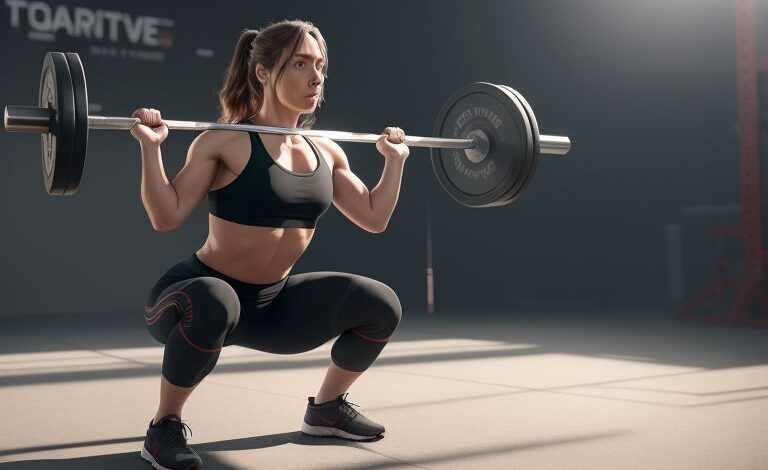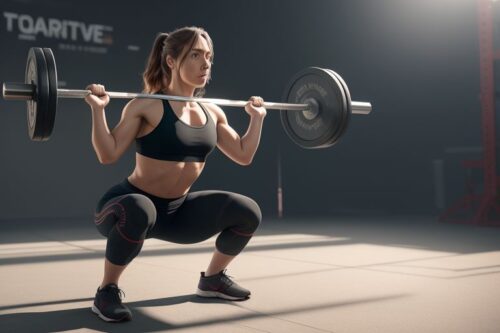The Advantages of Squats for Females: Unlocking Full-Body Strength and Wellness

When it comes to fitness, few exercises pack as powerful a punch as the squat. Universally praised by trainers and fitness enthusiasts alike, squats are an all-in-one workout capable of building strength, enhancing mobility, and sculpting the body. But why are they particularly advantageous for women? What makes squats such a transformative exercise for females of all ages, fitness levels, and body types?
In this comprehensive guide, we’ll explore the many advantages of squats for females, covering the benefits to strength, metabolism, posture, mental health, and more. We’ll also address how to perform squats safely and effectively, while dispelling common myths that often prevent women from incorporating squats into their regular workout routines.

Why Squats Are a Must-Do Exercise for Women
The beauty of the squat lies in its simplicity and versatility. With no fancy equipment required, this fundamental exercise can be done just about anywhere. Squats primarily target the lower body, but they also engage the core and even upper-body muscles depending on the variation.
For females specifically, squats can lead to significant improvements in physical fitness, body composition, and overall well-being. Here’s why:
1. Enhanced Lower Body Strength
The primary focus of squats is on the lower body, and they work several major muscle groups at once, including:
- Quadriceps
- Hamstrings
- Glutes
- Calves
For females, strengthening these muscle groups is essential not only for aesthetic purposes but also for functionality. Women are more prone to issues like knee pain and lower back discomfort, especially as they age or go through significant hormonal changes like pregnancy or menopause. Squats help build robust muscle mass in the legs and glutes, improving overall mobility, stability, and injury prevention.
Targeting the Glutes
One of the most sought-after benefits of squats for females is how they target and shape the glutes. Properly performed squats activate the gluteus maximus, which leads to improved muscle tone, lift, and roundness in the buttocks—a key aesthetic goal for many women.
2. Improved Core Strength and Stability
While squats are renowned for their lower-body benefits, many are unaware that squats also offer a fantastic workout for the core. When you squat, your abdominal and lower back muscles work hard to stabilize the body. This core activation is key for improving overall balance and preventing injuries in everyday activities like lifting, bending, and even walking.
A stronger core benefits women by reducing the risk of lower back pain, a common issue, especially during pregnancy and postpartum recovery. Squats help support a healthy spine and promote better posture.
3. Boosted Metabolism and Fat Burning
Squats are a compound movement, meaning they engage multiple muscle groups simultaneously. This makes them extremely efficient for burning calories. As women often face unique hormonal challenges, such as slower metabolic rates, particularly after the age of 30, performing compound exercises like squats can help stimulate the metabolism, leading to greater fat loss and muscle definition.
Because squats engage some of the largest muscles in the body, they require significant energy output. This increases calorie expenditure both during the workout and long after, as your body continues to burn calories while repairing the muscles (the “afterburn effect”).
For females looking to boost fat loss, incorporating squats into a strength training routine can help accelerate results and enhance overall body composition.
4. Increased Bone Density
One of the lesser-known but equally important advantages of squats for females is the positive impact on bone health. As women age, they become more susceptible to conditions like osteoporosis, which causes bones to become weak and brittle. Weight-bearing exercises like squats stimulate the bones to increase in density and strength, which is particularly important for females in their post-menopausal years.
Squats put the bones under healthy stress, prompting the body to lay down more bone tissue, particularly in the hips, spine, and legs—areas most prone to fractures in women.
5. Improved Flexibility and Mobility
While squats are often associated with strength, they also enhance flexibility and mobility—two aspects of fitness that are particularly important for women as they age. Squats require you to move through a full range of motion, from standing to sitting and back up again. Over time, this repeated movement improves the flexibility of the hips, knees, and ankles.
For females, better mobility leads to improved performance in daily activities, reduces the risk of injury, and helps maintain independence as they age. Squatting regularly can also help alleviate stiffness in the hips and lower back—common complaints for women who sit for prolonged periods.
6. Posture and Alignment Improvements
The core engagement required for squats also translates to better posture. For women who spend long hours sitting at desks or juggling family and work responsibilities, poor posture can be a real issue. Squats encourage proper alignment of the spine and pelvis, which can correct imbalances caused by poor posture.
Over time, women who regularly squat will notice an improvement in their overall body alignment, leading to less pain and discomfort in daily life and a more confident, upright posture.
7. A Versatile and Customizable Exercise
One of the best things about squats is their versatility. Whether you're a beginner or an advanced athlete, squats can be modified to suit your fitness level. Here are some squat variations that are especially effective for women:
Basic Bodyweight Squat
This beginner-friendly squat variation requires no equipment and can be done anywhere. It's ideal for building foundational strength and perfecting squat form.
Goblet Squat
By holding a dumbbell or kettlebell in front of the chest, the goblet squat adds an upper-body element to the exercise while also challenging the core. This squat variation is excellent for women looking to add weight without stressing the lower back.
Jump Squats
For females aiming to improve cardiovascular health and explosiveness, jump squats are a fantastic addition. This plyometric version of the squat increases heart rate and enhances muscle power while also improving endurance.
Sumo Squats
The sumo squat targets the inner thighs and glutes. It's an excellent variation for women who want to shape their thighs and buttocks while improving hip flexibility.
Bulgarian Split Squats
While technically a single-leg exercise, Bulgarian split squats target the quads, glutes, and hamstrings. This variation enhances lower body stability, making it a great option for women focused on balance and coordination.
8. Hormonal Benefits and Improved Mental Health
It’s well-established that regular physical activity boosts mood and mental well-being. Squats, as part of a full-body workout, trigger the release of endorphins, also known as the “feel-good” hormones, which alleviate stress and anxiety.
For women, hormonal fluctuations throughout life—whether due to menstrual cycles, pregnancy, or menopause—can negatively impact mental health. Incorporating strength training, especially squats, into a fitness routine can help balance these fluctuations. The endorphin release from exercise combats symptoms of depression, while the muscle-strengthening aspect helps stabilize metabolism, energy levels, and mood.
Moreover, studies have shown that weight training can improve self-esteem, making squats not just a physical exercise but a mental and emotional boost as well.
9. Convenient and Time-Efficient
For busy women juggling work, family, and social commitments, time can be a significant barrier to regular exercise. Squats offer an incredibly efficient solution because they work multiple muscle groups simultaneously, saving time without compromising on results.
Even incorporating just 10 minutes of squats into your daily routine can lead to noticeable improvements in strength, mobility, and body composition.
Common Myths About Squats for Females—Debunked
While squats offer a myriad of benefits, some women may shy away from them due to lingering myths. Let’s clear up a few:
Myth 1: Squats Will Make My Legs Bulky
This is one of the most pervasive myths, and it’s simply not true. Women generally do not produce enough testosterone to bulk up like men. Instead, squats help shape and tone the legs and glutes, leading to a more defined, athletic appearance.
Myth 2: Squats Are Bad for Your Knees
In fact, squats—when done with proper form—can strengthen the muscles around the knees, reducing the risk of injury. Poor form or adding too much weight too quickly can cause problems, but squatting correctly is safe and beneficial for knee health.
Myth 3: Squats Are Only for Athletes
Anyone can do squats, regardless of fitness level. Squats can be modified to suit beginners, seniors, and those recovering from injury. They are one of the most functional exercises for people of all ages.
How to Perform Squats Safely and Effectively
Performing squats with proper form is crucial to avoiding injury and maximizing the benefits. Here’s a quick guide to mastering your squat technique:
- Stand with your feet shoulder-width apart. Point your toes slightly outward.
- Engage your core and keep your chest lifted. Your back should remain neutral, with no rounding or arching.
- Lower your body by pushing your hips back as if sitting in a chair. Make sure your knees track over your toes but don’t extend past them.
- Go as low as you can while keeping your feet flat on the ground. Ideally, your thighs should be parallel to the floor.
- Push through your heels to stand back up, squeezing your glutes at the top.
Final Thoughts: The Transformative Power of Squats for Females
Whether you're aiming to tone your legs, improve your strength, or simply boost your overall fitness, squats are a game-changer for women. The combination of full-body engagement, core stability, calorie burn, and mental health benefits make squats an essential exercise for females of all fitness levels.
By incorporating regular squatting into your workout routine, you’ll not only build a stronger, more resilient body but also improve your confidence, posture, and overall quality of life. So why wait? Start squatting today and unlock the incredible advantages they offer.

